Carrying capacity of a population is determined by :
Population growth rate
Birth rate
Death rate
Limiting resources
The correct Answer is:D
Step-by-Step Solution:
1. Understanding Carrying Capacity:
- Carrying capacity refers to the maximum number of individuals of a species that an environment can sustain over time without degrading the environment.
- It is a key concept in population ecology.
2. Factors Influencing Carrying Capacity:
- The carrying capacity is influenced primarily by the availability of resources in the environment. This includes food, water, habitat, and other essential resources.
- Each environment has a limited amount of these resources, which directly affects how many individuals can be supported.
3. Evaluating the Options:
- Population Growth Rate: While this indicates how fast a population can grow, it does not directly determine the carrying capacity. A high growth rate does not mean the environment can support that growth if resources are limited.
- Birth Rate: Similar to growth rate, a high birth rate does not affect the carrying capacity if resources are insufficient to support the additional individuals.
- Death Rate: The mortality rate also does not influence the carrying capacity directly. It may affect population size but not the maximum sustainable population.
- Limited Resources: This is the primary factor that determines carrying capacity. The availability of resources dictates how many individuals can be supported in a given environment.
4. Conclusion:
- Based on the evaluation of the options, the correct answer is that the carrying capacity of a population is determined by limited resources.
Final Answer:
- The carrying capacity of a population is determined by limited resources.
---
- Carrying capacity refers to the maximum number of individuals of a species that an environment can sustain over time without degrading the environment.
- It is a key concept in population ecology.
- The carrying capacity is influenced primarily by the availability of resources in the environment. This includes food, water, habitat, and other essential resources.
- Each environment has a limited amount of these resources, which directly affects how many individuals can be supported.
- Population Growth Rate: While this indicates how fast a population can grow, it does not directly determine the carrying capacity. A high growth rate does not mean the environment can support that growth if resources are limited.
- Birth Rate: Similar to growth rate, a high birth rate does not affect the carrying capacity if resources are insufficient to support the additional individuals.
- Death Rate: The mortality rate also does not influence the carrying capacity directly. It may affect population size but not the maximum sustainable population.
- Limited Resources: This is the primary factor that determines carrying capacity. The availability of resources dictates how many individuals can be supported in a given environment.
- Based on the evaluation of the options, the correct answer is that the carrying capacity of a population is determined by limited resources.
- The carrying capacity of a population is determined by limited resources.
Topper's Solved these Questions
- NEURAL CONTROL AND COORDINATIONBOOK - TRUEMEN BIOLOGY ENGLISHCHAPTER - NEURAL CONTROL AND COORDINATIONEXERCISE - MCQ
246 Videos
- PLANT GROWTH AND DEVELOPMENT AND PLANT MOVEMENTS BOOK - TRUEMEN BIOLOGY ENGLISHCHAPTER - PLANT GROWTH AND DEVELOPMENT AND PLANT MOVEMENTS EXERCISE - MULTIPLE CHOICE QUESTIONS
158 Videos
Similar Questions
A: Optical communication system is more economical than other system of communications.
R: The information carrying capacity of a communication system is directly proportional to its band width.
View SolutionFill in the blanks
Inherent capacity of a population to increase under optimal conditions is called.............. .
View Solution
Knowledge Check
Carrying capacity is
Amaximum number of individuals which an environment can sustainBminimum number of individuals which an enviorment can sustainCboth (a) and (b)DNone of theseAssertion : The specific heat capacity of a given solid can be determined by using the principle of calorimetry
Reason : Heat gained is equal to the heat lost.AIf both assertion and reason are true and reason is the correct explanation of assertion.BIf both assertion and reason are true and reason is not the correct explanation of assertion.CIf assertion is true and reason is false.DIf both assertion and reason are false.The given graph shows the range of variation among population members for a trait determined by multiple genes. If this population is subjected to disruptive selection for several generations, which of the following distributions is most likely to result?
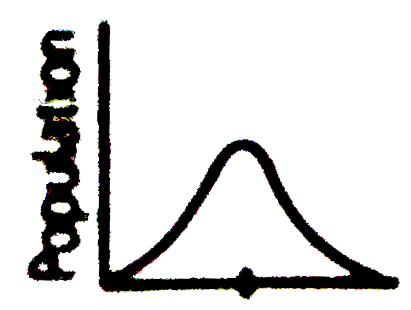 A
A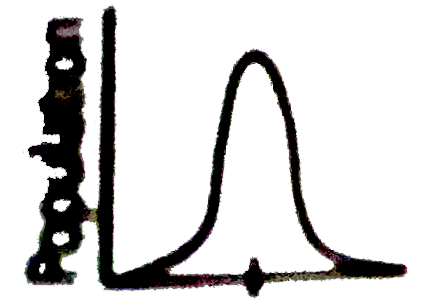 B
B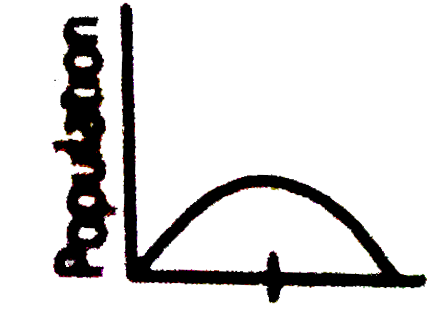 C
C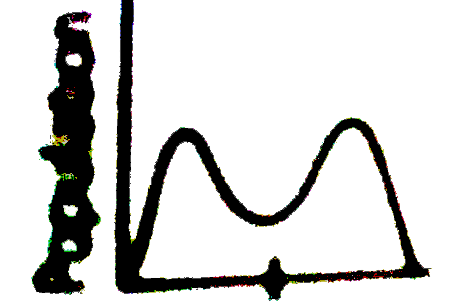 D
D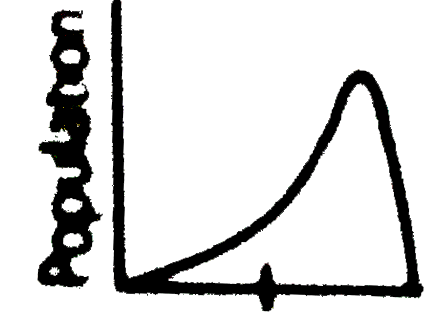
Oxygen carrying capacity of human blood is reduced due ot the pollution of
View SolutionDefine carrying capacity
View SolutionWater holding capacity of determined by measuring the weight of
View SolutionA gas ‘G’ combines with haemoglobin to form carboxyhaemoglobin. In blood, when the concentration of carboxyhaemoglobin reaches about percent, the oxygen carrying capacity of blood is greatly reduced. ‘G’ is :
View SolutionMaximum survival and reproductive capacity shown by a population under optimal environmental conditions is called:
View Solution
